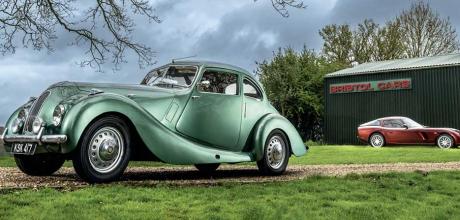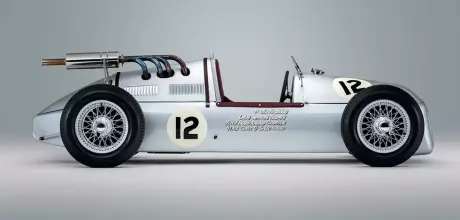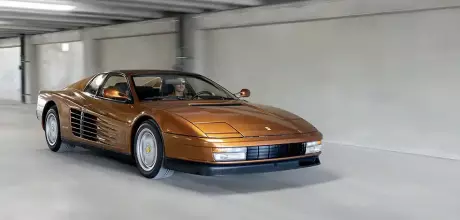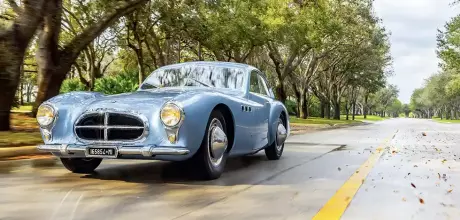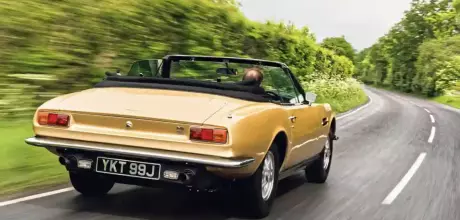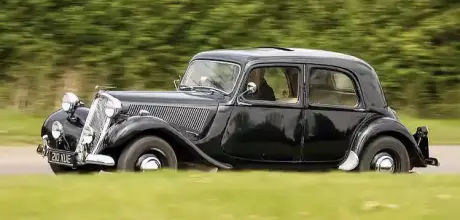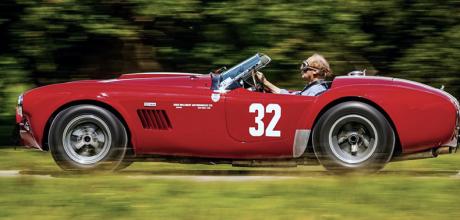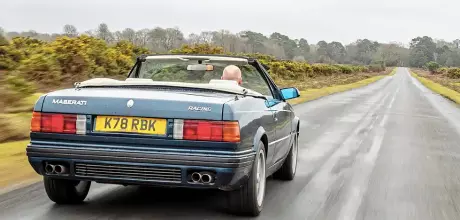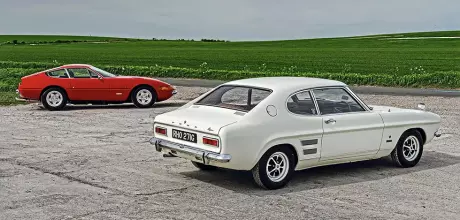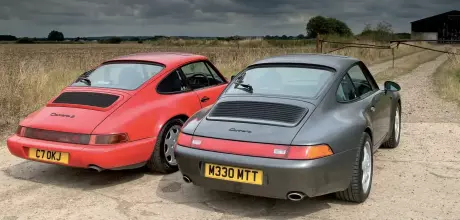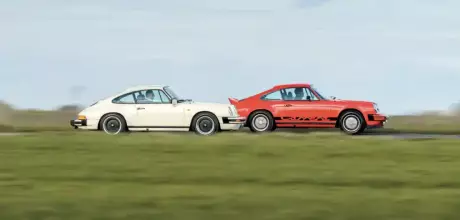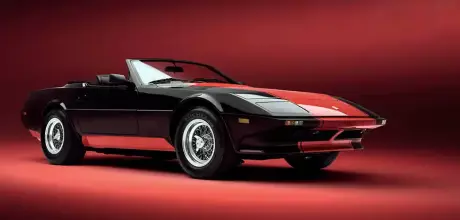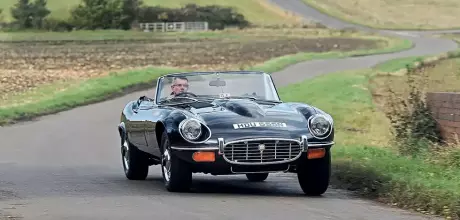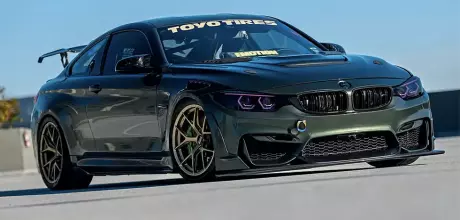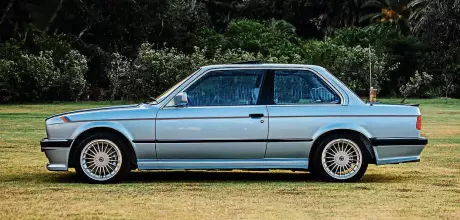Text materials
- Retro
- Sport Cars
- Tuning
- Sedan
- Comparison
- History
- SUV
- Electric
- Pickup
- Cabrio
- Wagon
- Hatchback
- Interview
- Moto
Editor's comment
Much of the time it makes perfect sense to compare direct rivals alongside each other, but sometimes it takes opposing perspectives to fully understand cars
You’ve got Rolls-Royce ideas on a pushbike income,’ a phrase I haven’t been hit with for a long time. I think the last occasion when it stung my ears was when I dared to entertain notions of one day buying a Seventies Aston V8, at a time when dubious but almost shiny examples seemed plentiful at around £10k. By then I’d graduated from Raleigh Record to Ford Capri 3.0GXL – also dubious and almost shiny – and the Aston seemed only a couple of steps on, allowing for some nifty man maths. Replace those cars with new examples and the journey from one to the other would have seemed an impossible quest at the time, like that between our Capri 1600GT and 365GTB/4 cover stars, cars that shared tarmac in offering the romance of grand touring but were really worlds apart. Viewing each from the perspective of the other was a challenge we gave to Sam Dawson this month, and his story throws fresh light on two highly charismatic GTs from the fast-moving transition of Sixties into Seventies. I can’t imagine Stephen Hawking maths could have made the numbers work to put the Ferrari in my garage, then or now, even one in dubious and not quite shiny condition. It will remain one of those cars I’m content to enjoy on paper and by occasional sight and sound at events, along with a carefully banked memory of borrowing one for the weekend to visit friends in south Wales via a route wilfully avoiding the tedium of motorways and congested towns. On the sort of twiddly little roads that I instinctively and misguidedly first headed for, it felt cumbersome; opened up on sweeping A-roads it came ever more alive with each 10mph increment on the speedo. The sight of that chiselled snout spearing with improbable pace towards the rearview mirrors of the countless cars I passed must have been hard for their startled drivers to comprehend. More than 50 years ago it must have seemed like a visitation from another world. Enjoy the article.
You’ve got Rolls-Royce ideas on a pushbike income,’ a phrase I haven’t been hit with for a long time. I think the last occasion when it stung my ears was when I dared to entertain notions of one day buying a Seventies Aston V8, at a time when dubious but almost shiny examples seemed plentiful at around £10k. By then I’d graduated from Raleigh Record to Ford Capri 3.0GXL – also dubious and almost shiny – and the Aston seemed only a couple of steps on, allowing for some nifty man maths. Replace those cars with new examples and the journey from one to the other would have seemed an impossible quest at the time, like that between our Capri 1600GT and 365GTB/4 cover stars, cars that shared tarmac in offering the romance of grand touring but were really worlds apart. Viewing each from the perspective of the other was a challenge we gave to Sam Dawson this month, and his story throws fresh light on two highly charismatic GTs from the fast-moving transition of Sixties into Seventies. I can’t imagine Stephen Hawking maths could have made the numbers work to put the Ferrari in my garage, then or now, even one in dubious and not quite shiny condition. It will remain one of those cars I’m content to enjoy on paper and by occasional sight and sound at events, along with a carefully banked memory of borrowing one for the weekend to visit friends in south Wales via a route wilfully avoiding the tedium of motorways and congested towns. On the sort of twiddly little roads that I instinctively and misguidedly first headed for, it felt cumbersome; opened up on sweeping A-roads it came ever more alive with each 10mph increment on the speedo. The sight of that chiselled snout spearing with improbable pace towards the rearview mirrors of the countless cars I passed must have been hard for their startled drivers to comprehend. More than 50 years ago it must have seemed like a visitation from another world. Enjoy the article.
Porsche 911 G-Series and 930 → From 1974 Porsche 911 Carrera 2.7 to 1989 911 SC: why these are the 911s to buy now
Editor's comment
The 911s that make sense
When I was a pup – well, probably in my teens, which means my opinions were even more virulent yet even more unfounded – I didn’t much care for new Porsche 911s. You couldn’t blame me: I was born in 1968, so when I was most full of revolution and rebellion and looking for a system to smash, 911s were at their new-establishment peak, that thankfully brief window in the mid-80s when all the cliches were formed. Red-braces wearing yuppie a-holes going backwards into hedges in matching Guards Red impact-bumper 911s while swilling from a bottle of Pol was real (though perhaps rather less frequent than the tabloids made out). As was the 911’s guilt by association, sadly.
By the time I got into the classic car magazine game in the mid-90s, the big-bumper generation of Porsche was still unfashionable, all too often the cars were uncared for and poorly maintained daily drivers at the bottom of their value curve. They were what you bought if you couldn’t afford a ‘proper’ Porsche.
To those of us of a certain age, I guess they still are to a lesser degree, but to an only slightly younger generation of enthusiasts, the one that has also embraced all those 1970s shades of brown that still make my blood curdle – russet, sable, oatmeal et al – there seems to be no trace of that stigma. Of course, you suspect that they might change their minds the moment they have the wherewithal to test drive a 1968 S, but for now I am quite jealous that they can enjoy the later cars without all the social baggage that used to come with them, used to spoil them. That’s partially a comment on how quickly society and perceptions move on in the modern world, but mainly it’s testament to the longevity of a brilliant design.
Heck, the cars we are rightly celebrating this issue were in production so long that they easily outlived their own negative stereotypes in period. They emerged in 1974 and bowed out in 1989, they pretty much saw off their own succession plan when the front-engined cars came and went, and now they seem far more related to what came before than to what came after.
After all, with all the world’s 964s being hoovered up for restomods and 993s being sufficiently evolved to be an entirely different car, these G- (and on) Series 911s are suddenly looking extremely appealing in their own right rather than merely as an alternative to something you can’t afford. In the words of the wise Glen Waddington: ‘It’s the only “purebred” 911 that still exists in reasonable quantities and for almost sane money.’
When I was a pup – well, probably in my teens, which means my opinions were even more virulent yet even more unfounded – I didn’t much care for new Porsche 911s. You couldn’t blame me: I was born in 1968, so when I was most full of revolution and rebellion and looking for a system to smash, 911s were at their new-establishment peak, that thankfully brief window in the mid-80s when all the cliches were formed. Red-braces wearing yuppie a-holes going backwards into hedges in matching Guards Red impact-bumper 911s while swilling from a bottle of Pol was real (though perhaps rather less frequent than the tabloids made out). As was the 911’s guilt by association, sadly.
By the time I got into the classic car magazine game in the mid-90s, the big-bumper generation of Porsche was still unfashionable, all too often the cars were uncared for and poorly maintained daily drivers at the bottom of their value curve. They were what you bought if you couldn’t afford a ‘proper’ Porsche.
To those of us of a certain age, I guess they still are to a lesser degree, but to an only slightly younger generation of enthusiasts, the one that has also embraced all those 1970s shades of brown that still make my blood curdle – russet, sable, oatmeal et al – there seems to be no trace of that stigma. Of course, you suspect that they might change their minds the moment they have the wherewithal to test drive a 1968 S, but for now I am quite jealous that they can enjoy the later cars without all the social baggage that used to come with them, used to spoil them. That’s partially a comment on how quickly society and perceptions move on in the modern world, but mainly it’s testament to the longevity of a brilliant design.
Heck, the cars we are rightly celebrating this issue were in production so long that they easily outlived their own negative stereotypes in period. They emerged in 1974 and bowed out in 1989, they pretty much saw off their own succession plan when the front-engined cars came and went, and now they seem far more related to what came before than to what came after.
After all, with all the world’s 964s being hoovered up for restomods and 993s being sufficiently evolved to be an entirely different car, these G- (and on) Series 911s are suddenly looking extremely appealing in their own right rather than merely as an alternative to something you can’t afford. In the words of the wise Glen Waddington: ‘It’s the only “purebred” 911 that still exists in reasonable quantities and for almost sane money.’


